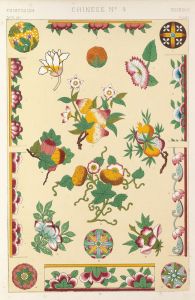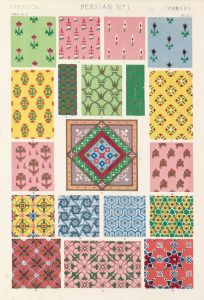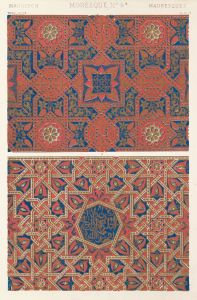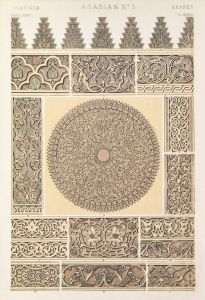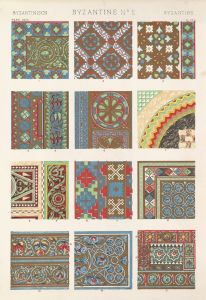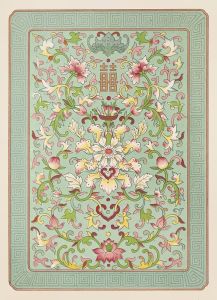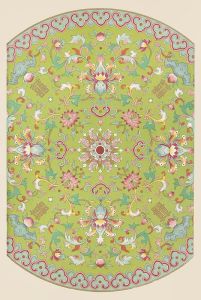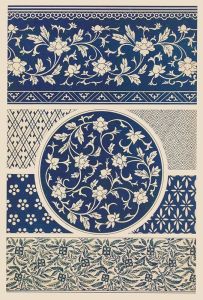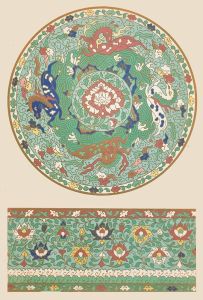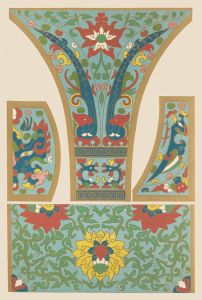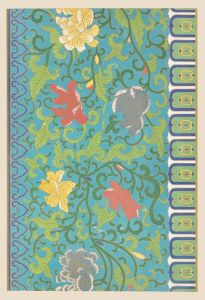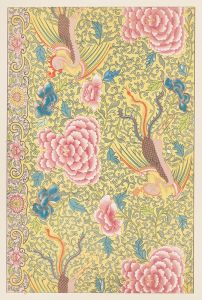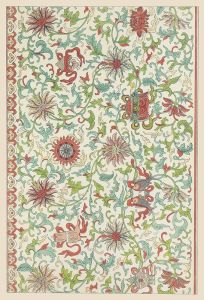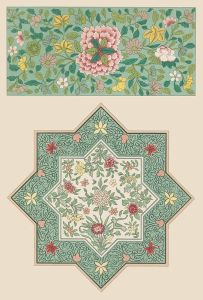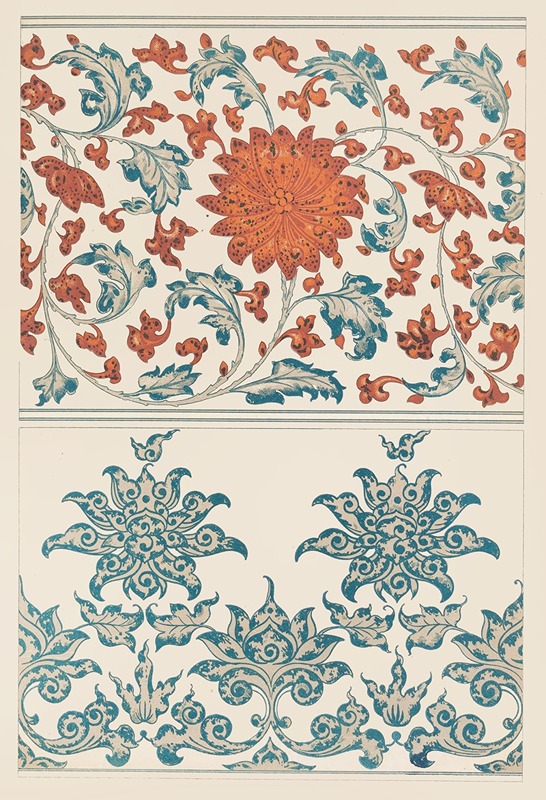
Examples of Chinese ornament, Pl.39
A hand-painted replica of Owen Jones’s masterpiece Examples of Chinese ornament, Pl.39, meticulously crafted by professional artists to capture the true essence of the original. Each piece is created with museum-quality canvas and rare mineral pigments, carefully painted by experienced artists with delicate brushstrokes and rich, layered colors to perfectly recreate the texture of the original artwork. Unlike machine-printed reproductions, this hand-painted version brings the painting to life, infused with the artist’s emotions and skill in every stroke. Whether for personal collection or home decoration, it instantly elevates the artistic atmosphere of any space.
"Examples of Chinese Ornament, Pl.39" is a plate from the influential design book "The Grammar of Ornament," authored by Owen Jones and first published in 1856. Owen Jones was a prominent British architect and designer known for his work in color theory and ornamental design. His book aimed to provide a comprehensive collection of decorative arts from various cultures, serving as a reference and inspiration for designers and architects of the time.
"The Grammar of Ornament" consists of 100 color plates, each showcasing a different style or period of ornamentation. Plate 39 specifically focuses on Chinese ornamentation, reflecting the 19th-century European fascination with Asian art and design. This interest was part of a broader trend known as "Chinoiserie," which saw Western designers incorporating elements of Chinese art into their work.
Chinese ornamentation, as depicted in Jones's work, is characterized by its intricate patterns, vibrant colors, and symbolic motifs. These designs often include floral patterns, mythical creatures like dragons and phoenixes, and geometric shapes. The use of symmetry and balance is a hallmark of Chinese design, reflecting broader cultural values of harmony and order.
Jones's depiction of Chinese ornament in Plate 39 would have been based on his observations and studies of Chinese art available in Europe at the time. This could have included porcelain, textiles, and other decorative objects that were imported from China. The accuracy of these depictions would have depended on the quality and authenticity of the sources he had access to.
The publication of "The Grammar of Ornament" was significant in that it provided Western designers with a systematic study of global decorative arts, encouraging the appreciation and incorporation of diverse cultural aesthetics into Western design. Jones's work was pioneering in its use of chromolithography, a method of printing in color, which allowed for the vivid reproduction of the original designs.
While "Examples of Chinese Ornament, Pl.39" serves as an important historical document, it is essential to view it within the context of its time. The 19th century was a period of colonial expansion and cultural exchange, and Western interpretations of non-Western art were often filtered through a lens of exoticism and romanticism. As such, while Jones's work contributed to a greater appreciation of Chinese art, it also reflects the limitations and biases of its era.
Today, "The Grammar of Ornament" remains a valuable resource for historians, designers, and artists interested in the study of ornamental design. It provides insight into the 19th-century Western perspective on global art forms and continues to inspire contemporary design practices.





